A comprehensive approach to the treatment of cervical osteochondrosis aimed at reducing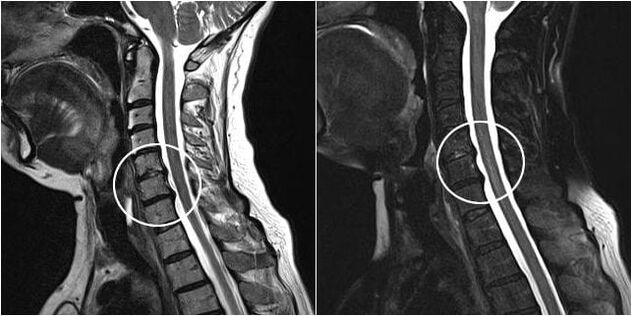 Severity of pain, stiffness.The therapy uses medications from different clinical and pharmacological groups, physiotherapy, classical and acupuncture massage, exercise therapy and acupuncture.If conservative treatments fail, surgery is performed.
Severity of pain, stiffness.The therapy uses medications from different clinical and pharmacological groups, physiotherapy, classical and acupuncture massage, exercise therapy and acupuncture.If conservative treatments fail, surgery is performed.
disease symptoms
In the initial stages of development, osteochondrosis is asymptomatic.Mild discomfort may occur in the back of the neck after lowering the head for a long time or strenuous physical activity.Patients are in no rush to see a doctor, mistakenly believing they are the result of a strained muscle.The pathology is slowly but continuously progressing.
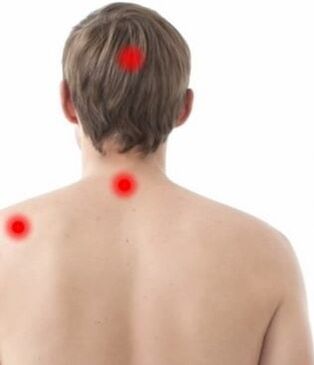
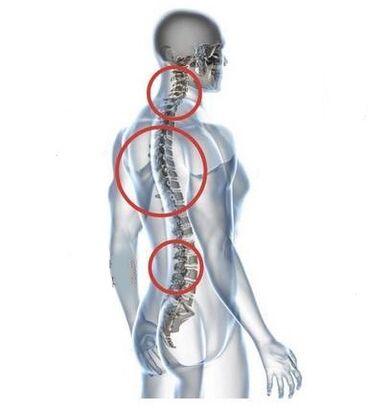
Neck discomfort is gradually replaced by a dull neck pain that worsens after heavy lifting, hypothermia, or weather changes.Other specific symptoms of cervical osteochondrosis:
- A crunching sound when you tilt or turn your head;
- Limited cervical spine movement;
- Severe, severe pain occurs when the condition worsens.
The patient's condition worsens as the discs and vertebrae deform.The course of osteochondrosis is complicated by neurogenic symptoms caused by osteophyte compression or herniation of the spinal cord roots and vertebral arteries.Headaches, dizziness, changes in blood pressure, and loss of vision and hearing occur.
Treatment methods for cervical osteochondrosis
No medication can restore vertebral structure.But it's possible to improve patients' health and stop the spread of disease.It's not enough to just take medication or apply ointments - you need to have physical therapy, go to a massage parlor and perform physical therapy activities every day.
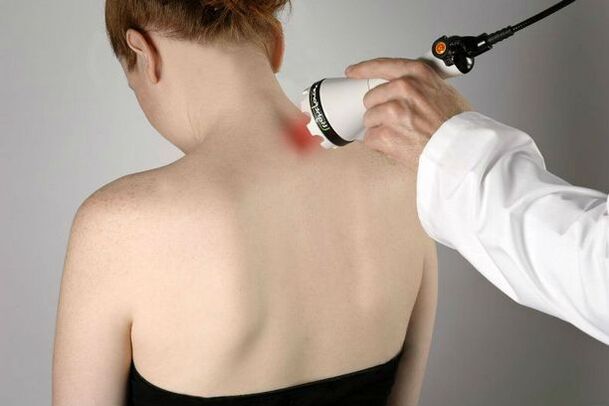
drug treatment
Medications are used to eliminate symptoms of osteochondrosis in the cervical spine, including improving circulation and partial disc regeneration.Since there are no characteristic signs in the initial stage, patients are referred to chiropractors or neurologists with pathological severity of grade 2 or even 3.Often they have developed complications - intervertebral hernia, disc herniation, vertebral artery syndrome.Therefore, doctors include in the treatment plan not only analgesics, but also improving innervation, relaxing skeletal muscles and restoring nutrition.
NSAIDs
In osteochondrosis of 2-3 radiographic stages, the patient complains of a sharp, stabbing pain when tilting or turning the head.In this case, the doctor will prescribe non-steroidal anti-inflammatory drugs.For severe pain, solutions are given intramuscularly - diclofenac, meloxicam, lornoxicam, ketorolac.This drug not only has analgesic effects, but also has anti-inflammatory and anti-edema effects.This is especially true when the soft tissues of the neck are injured due to disc displacement or osteophytes.
If the pain is not too severe and occurs frequently, NSAIDs in tablets or capsules may be used:
- Nimesulide;
- ketorolac;
- Diclofenac;
- celecoxib;
- Etoxib.
Systemic NSAIDs are quite toxic to the stomach because they cause increased production of hydrochloric acid.To eliminate the possibility of mucosal damage, it is necessary to take proton pump inhibitors together with NSAIDs.
Ointments and gels are used to eliminate minor aches and pains that plague patients during changes in weather or hypothermia.The most common treatment options include diclofenac, ketoprofen, Artrosilene, piroxicam, and ibuprofen.
hormones
Even if intramuscular NSAIDs do not have adequate analgesic effect, hormonal drugs are used - methylprednisolone, triamcinolone, betamethasone, dexamethasone.Glucocorticoids are characterized by significant analgesic, anti-inflammatory, and antiexudative activities.Hormone drugs are often used in combination with the anesthetics lidocaine and procaine for pharmacologic blockade.This method of administration ensures that the analgesic effect is maintained for days or even weeks.
However, glucocorticoids should not be used frequently.They are toxic to internal organs and can damage cartilage, bone and the ligament-tendon apparatus.Hormone drugs are also immunosuppressive and can negatively affect the immune system.
anesthetic
The anesthetics lidocaine and novocaine (procaine) are most commonly used for pharmacologic blockade in the treatment of cervical osteochondrosis.The latter is characterized by significant analgesic effects and a wide range of applications.Novocaine is used to block peripheral nerves and ganglia in the treatment of degenerative dystrophic diseases.Invasion of the spinal base by osteophytes or hernias can cause acute pain.
Lidocaine isn't just for blockades.This is one of the active ingredients in tolperisone injection, a muscle relaxant that eliminates muscle spasms.Preparations containing B vitamins also contain lidocaine.
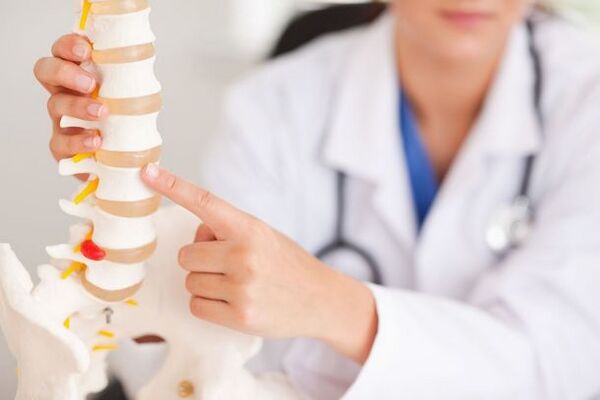
local irritant
Ointments, gels, and balms with warming and local stimulating effects are often used to treat cervical osteochondrosis, but only in the absence of soft tissue inflammation.They may contain camphor, menthol, turpentine, paprika extract, nicotine, nonivamide, snake or bee venom.These ingredients stimulate sensitive nerve endings located in the subcutaneous tissue, thereby eliminating pain.
This class of drugs has a vasodilatory effect, which is accompanied by a strong, long-lasting feeling of warmth.By improving the blood supply of nutrients to the tissues, tissue recovery can be accelerated.
Patients are often prescribed local irritating drugs to reduce the dose of systemic analgesics and reduce the pharmacological load on the body.
Drugs that improve blood microcirculation
Methods to improve circulation can be used to treat osteochondrosis in any location.But especially for cervical pathology, they are in greater demand.In this part of the spine, the arteries that provide nutrients and oxygen to the brain are often compressed.The following medications help restore blood supply:
- Niacin xanthineol, which can improve microcirculation, oxygenation, cartilage tissue and nutrition of various parts of the brain;
- Pentoxifylline can reduce blood viscosity and the aggregation of platelets and red blood cells, and improve the rheological properties (fluidity) of blood;
- Aminophylline, which can reduce blood vessel wall tension and promote peripheral vasodilation.
Preparations containing lipoic acid are often used to improve microcirculation.They have a vasodilatory effect, restore the function of spinal cord roots, improve nutrition and innervation.
vitamins
In order to improve a person's health, strengthen the body's defenses and replenish the material reserves required for tissue regeneration, patients need to take a balanced complex of vitamins and trace elements.One pill per day of any drug is enough to eliminate the resulting deficiencies.
But drugs containing B vitamins are more commonly used to treat cervical osteochondrosis.In addition to pyridoxine, thiamine, and cyanocobalamin, the ingredients of the injection also include the anesthetic lidocaine.Prescription vitamin B tablets may also be prescribed.Their course use helps improve the transmission of nerve impulses and stimulates natural mechanisms aimed at recovery.

chondroprotectant
This is the only group of drugs used in the treatment of the pathogenesis of cervical osteochondrosis.In the initial stages of pathological development, chondroprotective agents are used to partially repair the intervertebral disc.This effect is due to the ability of chondroitin and glucosamine to stimulate the synthesis of proteoglycans, increase the production of hyaluronic acid, activate all functions of chondrocytes (chondrocytes) and inhibit their premature destruction.
Chondroprotectants are also indicated for patients with grade 2 and 3 osteochondrosis.At this stage, cartilage tissue is no longer regenerating.But taking the drug in doses up to 800 milligrams can prevent further damaging and degenerative changes.The duration of the treatment course is 3 months.After 2 weeks of use, obvious anti-inflammatory and analgesic effects appear.
Active ingredients of chondroprotective drugs for the treatment of cervical osteochondrosis:
- Glucosamine sulfate or hydrochloride;
- Chondroitin sulfate;
- Glucosamine and chondroitin;
- Ingredients of plant or animal origin.
surgical intervention
Indications for surgical intervention include failure of conservative treatment and complications of cervical osteochondrosis, such as discogenic myelopathy, vertebral artery syndrome, and radicular syndrome.In order to decompress the spinal cord, blood vessels, and spinal cord roots, the following procedures are performed:
- laminectomy;
- Laminotomy;
- foraminotomy;
- facet joint resection;
- Discectomy.
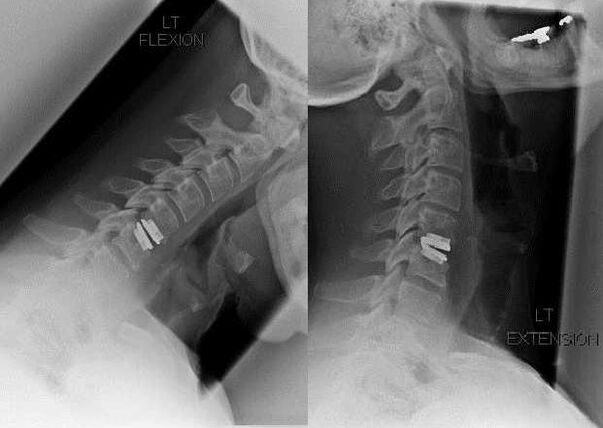
During the surgery, bone fragments and ligaments may be removed, and the disc may be completely or partially removed.For small herniated herniations, laser vaporization of the disc core is often performed.
After resection of vertebral structures, stabilization of the spinal motion segments by spinal fusion or installation of bone and dermal autografts is often required.
Massage and self-massage
There are many types of these treatments, but for cervical osteochondrosis, classic, acupressure, vacuum (including hardware), and segmented massage are more commonly used.Mechanical action on the back of the neck, shoulders, forearms and back stimulates lymphatic drainage, decongests veins, strengthens muscles and relaxes skeletal muscles.Massage can not only treat diseases, but also prevent their recurrence.
Self-massage can be performed by rubbing, caressing, squeezing the back of the neck, etc., for 10-15 minutes each time.But it is better to buy a special electrical device - a massager with a comfortable long handle and a speed controller - in a pharmacy or medical device store.
Sports therapy complex
The physiotherapist selects exercises individually for the patient, taking into account the severity of the pathology and the complications that arise.One of the criteria is the frequency of neurological manifestations.Typically, this complex includes the following exercises:
- Clench your fingers and place your palm on your forehead.Place your hands on your head and try to tilt it back, creating resistance due to tight neck muscles;
- Clench your fingers and place your palms on the back of your head.Press it with your hands, as if you were trying to lower your head.At the same time, tighten the muscles in your neck and shoulders and try to maintain the original position of your head;
- Place your palms on your cheeks.Try tilting your head toward your shoulders and resisting with your hands.Repeat the exercise on the other side.
Regular exercise therapy is the most effective way to eliminate the symptoms of cervical osteochondrosis and prevent its spread to healthy vertebral structures.Daily training stimulates the strengthening of muscles that stabilize the discs and vertebrae.Replenishes nutrient reserves by improving blood circulation to tissues.
manual therapy
Chiropractors always prepare patients for the upcoming procedure and begin treatment with a relaxing massage.He then stretches the muscles and removes excess tension with one fluid motion.As a result, the muscle spasms disappear and the pain intensifies when the roots of the spinal cord are squeezed.The compression of the vertebral artery was eliminated and the neurological symptoms disappeared.If necessary, a chiropractor will adjust the cervical spine.This may be accompanied by crunching, crackling, clicking sounds, and an increase in the severity of painful sensations.
One way to avoid surgery is to stretch (traction) the spine to increase the distance between the vertebral bodies and damaged discs.The surgery is performed by a chiropractor on a special operating table.But the most popular is underwater traction in the bathtub or pool.
acupuncture
This is one of the types of reflexology where patients are advised to restore mobility to cervical spine structures and improve blood circulation.During the treatment, very fine needles of various lengths made of steel, silver, and gold are used.They are installed not only at the back of the neck, but also at bioactive points on the back, shoulders and forearms.
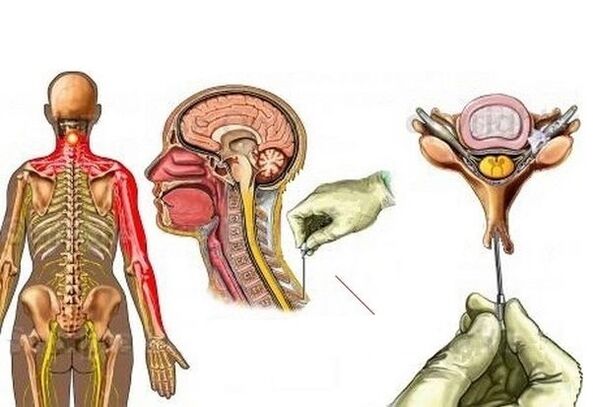
After the needle is inserted, weak pain impulses begin to flow into the central nervous system.The body responds by releasing bioactive substances into the systemic circulation that have analgesic and anti-inflammatory effects.The production of endorphins is increased, significantly improving the patient's health.
Orthopedic treatment methods
From the first day of treatment, the patient is recommended to wear an orthotic device - a Shants collar.They need to be worn for several hours and must be removed before bed or during the day.Collars can be elastic collars with plastic or metal inserts, rigid collars, or inflatable collars.Equipment varies in height, degree of attachment, and fastener design.The size of a patient's cervical collar is determined only by a chiropractor, who takes into account the severity of osteochondrosis symptoms and the possibility of displacement of the vertebral structures.

It is recommended that patients purchase a medium-firm orthopedic mattress.Blood circulation to bones, cartilage and soft tissues does not deteriorate while lying on it.Doctors also recommend sleeping on an orthopedic pillow with special recesses for the head.
Folk remedies and recipes
After basic treatment and elimination of all symptoms, use folk remedies.The feasibility and safety of using them at home should be discussed with your doctor.
honey ointment
Place a tablespoon of aloe vera juice and lanolin in a mortar and grind until a uniform mass forms.Add a teaspoon of turpentine, a drop of eucalyptus, pine, and rosemary essential oils, and 30 grams of concentrated floral honey, and stir.Keep kneading and add 100 grams of medical grade Vaseline in small portions.When discomfort occurs, rub the ointment into the skin of your neck.
horseradish leaves
Rub a large piece of fresh horseradish leaf into a thick layer of honey and apply it to the back of your neck.Secure the compress with plastic wrap, warm cloth, and gauze bandage.The duration of this procedure is 1-2 hours.
Other herbal compresses
In a mortar, grind the fresh leaves of plantain, dandelion, burdock, cinquefoil, and elecampane into a thick paste.Stirring constantly, add a few drops of juniper berry and thyme essential oils and a tablespoon of almond cosmetic oil.Apply the lump to the back of your neck, secure the compress with a film and a medical bandage, and let it sit for an hour.
Ways to prevent the disease
Osteochondrosis is a relapsing degenerative disorder that occurs against the background of progressive disc destruction and bone deformation.It is necessary to exclude from the usual lifestyle factors that cause the nutritional deterioration of cartilage tissue.These are insufficient physical activity, excess weight, excessive physical activity and a lack of foods rich in trace elements and vitamins in the diet.
























